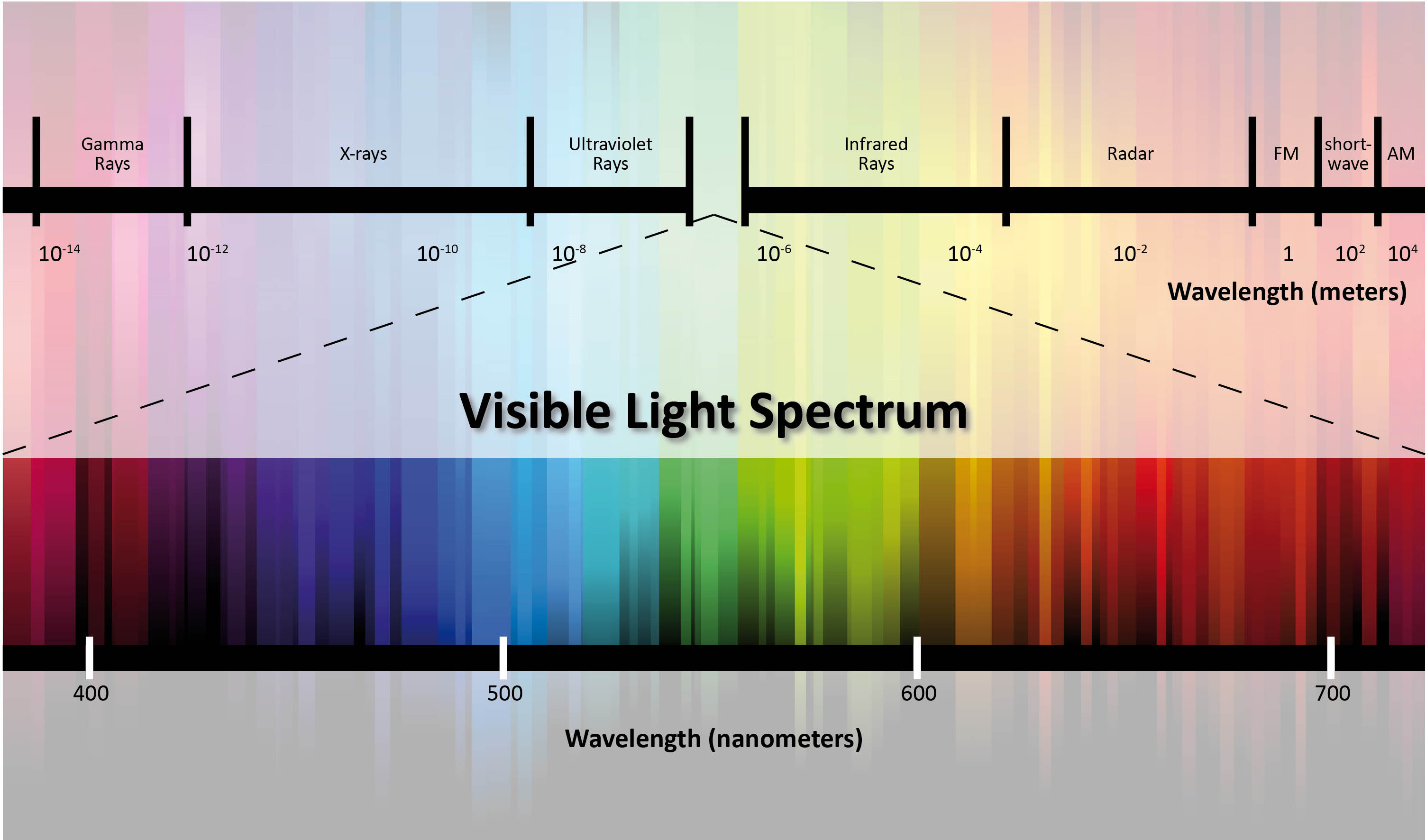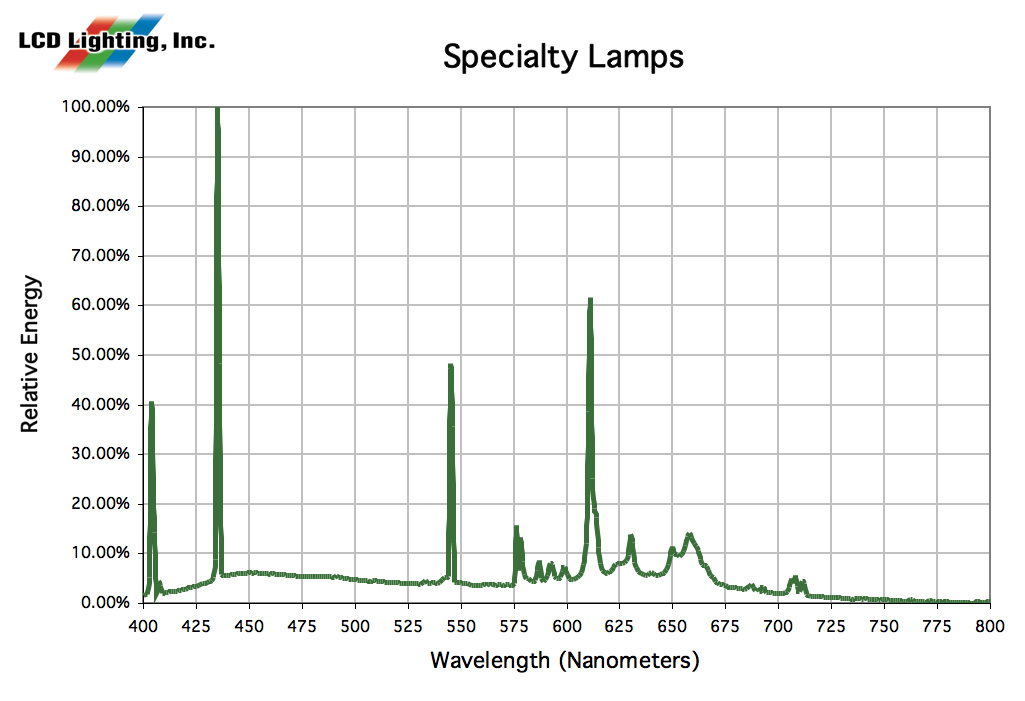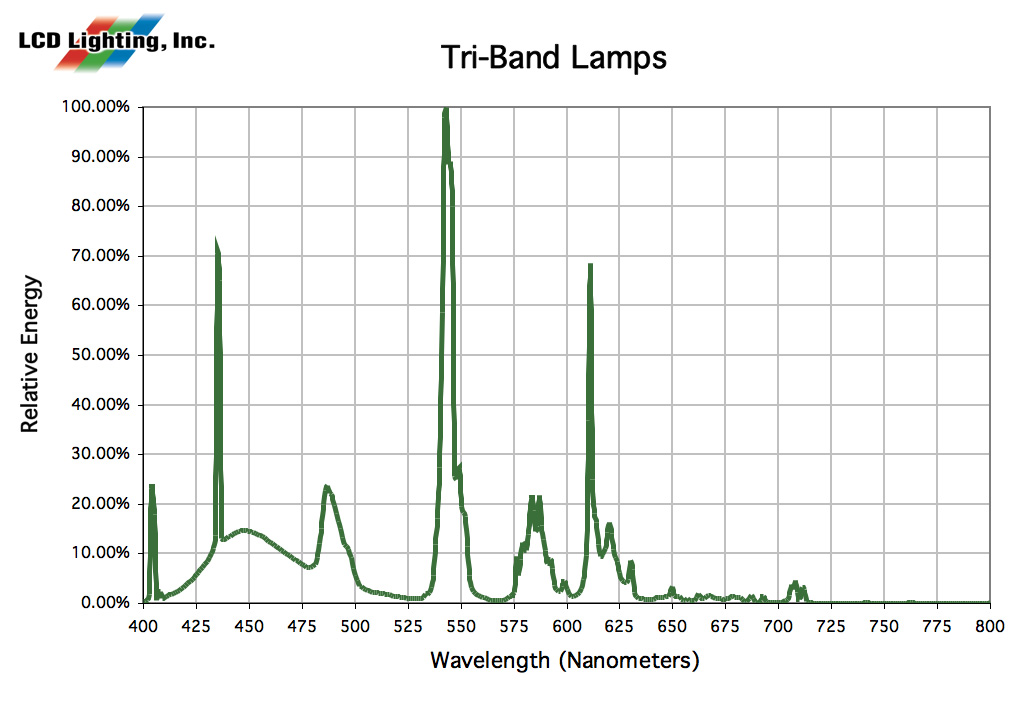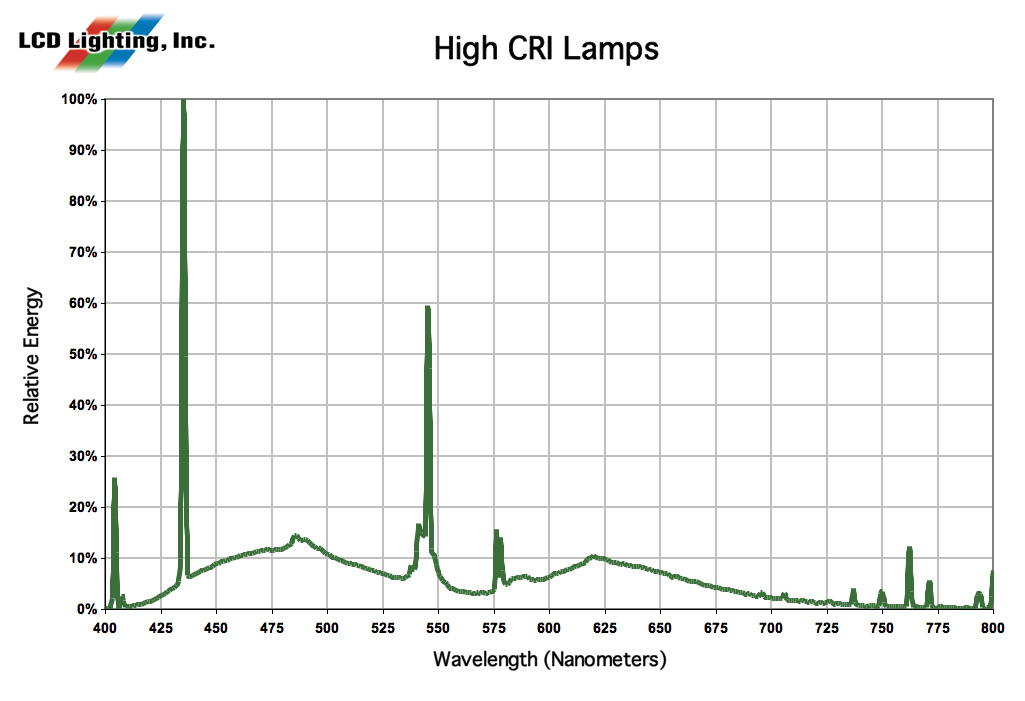High CRI Lamps
LCD Lighting’s proprietary color rendering index (CRI) has more rare earth tri-phosphors to provide true and natural color. With our unique technology, OEMs and end-users can have custom colors and images for their unique products and application requirements.
What is the Color Rendering Index (CRI)?
For many industries, such as signage, jewelry showcases and displays, clothing displays, food displays, and textiles, it is important to know how well their fluorescent lamps can “reproduce” a color in relation to a natural or ideal light source. The Color Rendering Index (CRI) quantitatively measures a light source’s ability to render color on a scale of 0 to 100 percent. The higher the CRI, the better its ability.
A CRI of 85 to 90 percent is considered good at color rendering, while a CRI of 90 percent or above is considered excellent. A CRI index of 90 or above should be used for tasks requiring the most accurate color discrimination.
CRI is completely independent of color temperature. Lamps with the same color temperature light source can have different CRIs.
What is spectral power distribution (SPD)?
 The visible part of the electromagnetic spectrum is composed of radiation with wavelengths from approximately 400 to 750nm. The left side of the spectrum (blue) has shorter wavelengths while the right side of the spectrum (red) has longer wavelengths. Between the two sides (colors) is a range of wavelengths and colors.
The visible part of the electromagnetic spectrum is composed of radiation with wavelengths from approximately 400 to 750nm. The left side of the spectrum (blue) has shorter wavelengths while the right side of the spectrum (red) has longer wavelengths. Between the two sides (colors) is a range of wavelengths and colors.
SPD’s display a light source’s ability to render all, or, select colors. Daylight provides the highest level of color rendering across the spectrum. The spectral distribution of a fluorescent lamp shows all wavelengths in the spectrum, but only certain wavelengths have a strong presence (shown as spikes on the graphs below ). These spikes indicate which parts of the color spectrum will be emphasized in the rendering of color for objects illuminated by the lamp. Below see how a typical SPD graph for daylight looks like. And also compare the daylight spectral power distribution with that for a particular fluorescent lamp.
 |
 |
 Back to top Back to top |
Specifying the Color of Fluorescent Lamps
When it comes to choosing the best color for fluorescent lamps, the most common response is, “It does not matter, as long as it’s white.” Since we have more than 100 different ‘shades of white’, or phosphor blends, to chose from, a slight variation can make a big difference for many applications. The best way to define the color is by the color coordinates. Below is the 1976 to help in selecting a specific color. We will choose our closest existing phosphor to the color coordinates you have selected. If, however, one of our commonly used phosphors does not meet your needs, we can develop a new blend just for you.
For more information on how to select a color, visit our specialty fluorescent education section.
Did you know we provide our clients of the specialty lighting and UVC germicidal industry proprietary lamp solutions?… > Learn More


